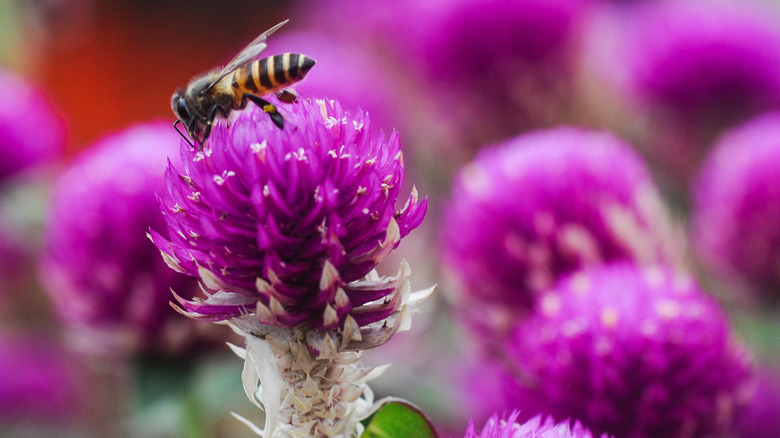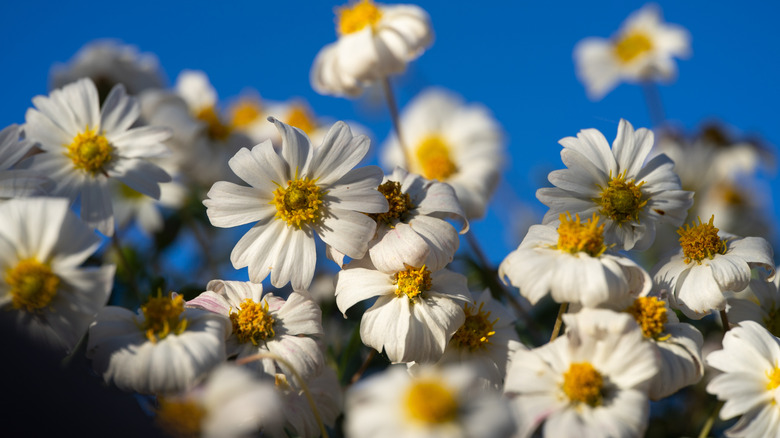The Easy-To-Grow Flower That Pairs Well With Beautiful Gomphrena For A Pollinator-Friendly Garden
With its charming purple blooms and an impressive ability to attract butterflies, bees, and even hummingbirds, gomphrena (Gomphrena globosa) is one of the best flowers around for bringing pollinators to your yard and is a perfect addition to your summer garden. Pairing it with other cheery pollinator favorites can help give your yard even more life and color. One flower that's also a pollinator magnet — and makes a perfect gomphrena companion — is the charming blackfoot daisy (Melampodium leucanthum).
You don't need much of a green thumb to grow gomphrenas and blackfoot daisies. Both plants are considered quite easy to grow, and since they thrive in similar conditions, they make a perfect pair. The two plants complement each other visually, too, with the white-petalled daisies providing contrast in both shape and color to the purple balls of the gomphrena flowers. This combo will help you attract more than just pollinators, as songbirds are also big fans of blackfoot daisies.
Growing and caring for gomphrena and blackfoot daisies
Both gomphrenas and blackfoot daisies thrive in full to part sun, though gomphrena flowers best in sunnier locations. Both plants also benefit from well-draining soil, so consider amending your growing medium if it's prone to being soggy or waterlogged. Since they're both relatively drought tolerant, blackfoot daisies and gomphrena can be perfect for anyone trying to implement more climate-conscious gardening methods.
One thing that's important to keep in mind when growing your gomphrena and blackfoot daisies together is that while the daisies are perennial in zones 4 through 11, gomphrena is generally grown as an annual. So, make sure you'll be able to remove the gomphrenas at the end of the growing season without disturbing the daisies. The daisies often grow to 4 feet in height, so consider growing them in the back of your borders, with the shorter gomphrenas closer to the front. This placement will allow you to see and enjoy both plants and the pollinators they attract while also simplifying the task of removing the gomphrena at the end of the season. Keep in mind that gomphrenas are self-seeding flowers, and may effortlessly return in the following years.

